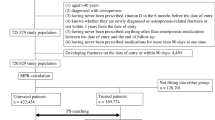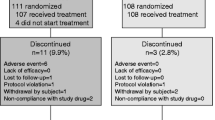Abstract:
The purpose of this study was to determine the effect of treatment with active vitamin D metabolites and other concurrent medication on the prevention of hip fractures in elderly women. We inspected the medical records of the entire female population over 65 years of age on Sado Island, and followed a total of 11377 women for a 3-year period. Of these, 1208 osteoporotic patients were treated with either 1,25-(OH)2D3 or 1α-(OH)D3. The 765 patients who received the minimum effective dosage for more than 6 months made up the ‘treatment group’. Nearly half these patients were also treated with either calcitonin or calcium. The 443 patients who received treatment with active vitamin D metabolites, but at a dosage or for a duration that did not meet the criteria for the treatment group, were deemed the ‘ineffective group’. The remaining 10169 women were the ‘non-treatment group’. Fractures in the non-treatment group occurred at a rate of 39.8 fractures/10000 person-years. The rate in the treatment group was 10.8, which was significantly lower (p= 0.039). Interestingly, the fracture rate after ceasing treatment was 52.1, which was significantly higher (p= 0.002) than the rate in patients receiving treatment. No statistical differences in the fracture rate were found between the ineffective, non-treatment and post-treatment groups. A reduction in the fracture rate was observed only in the treatment subgroup that did not also receive calcitonin (p= 0.042), and not in the subgroup that also received calcitonin therapy (p= 0.333). However, there was no statistical difference in the hip fracture rates between these two subgroups (p= 0.157) and the actual number of fractures was minimal (0 vs 2). Therefore, in this study, the advantage of treatment with active vitamin D alone over combined treatment with calcitonin seems to be marginal. In conclusion: (1) treatment with active vitamin D metabolites and with combined therapy may be marginally effective in preventing hip fractures, and (2) stopping the treatment clearly increases the risk of hip fractures.
Similar content being viewed by others
Author information
Authors and Affiliations
Additional information
Received: 26 August 1997 / Accepted: 4 June 1998
Rights and permissions
About this article
Cite this article
Tanizawa, T., Imura, K., Ishii, Y. et al. Treatment with Active Vitamin D Metabolites and Concurrent Treatments in the Prevention of Hip Fractures: A Retrospective Study . Osteoporos Int 9, 163–170 (1999). https://doi.org/10.1007/s001980050131
Issue Date:
DOI: https://doi.org/10.1007/s001980050131




